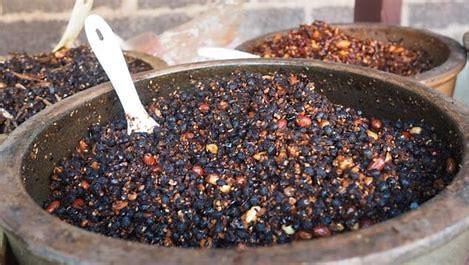25. 黄姚古镇 (huáng yáo gǔ zhèn)

Movie Poster - Fair Use
As I mentioned in the last instalment, the 2006 movie The Painted Veil was largely filmed in Guangxi. Only the Shanghai and London scenes were not – they were both shot in Shanghai. As I noted the river scenes were shot in Yizhou, leaving only the town where the couple lived and the hospital where they worked to be accounted for. These were shot in 黄姚古镇 (huáng yáo gǔ zhèn), Huangyao Ancient Town, which is in Hezhou (贺州 - hè zhōu) prefecture of eastern Guangxi. Many movies and television shows have been shot in this picturesque old town.
The historic part of the town is around 1,000 years old and has changed little in that time. Today, it is quite a tourist destination, charging ¥100 per adult to visit (¥50 per child between 120 – 140 cm tall. Over 80s and kids 120 cm and under accompanied by a ticket holding adult go free.) More information here.
Apart from the historical and general sightseeing attraction, the town is also of some culinary significance. The stuffed tofu I mentioned in the first post is considered to be a local speciality and the town is known for high grade soy beans and especially fermented black beans 豆豉 (dòu chǐ). But two products in particular stand out.

Huangyao Fermented Black Beans
黄姚豆腐 (huáng yáo dòu fu)
This literally just means ‘Huangyao Tofu’ but refers to a rather special type of fried then braised bun. Tofu made using water from the local well is crumbled and mixed with half-fat minced pork. This mixture is shaped into buns and half-fried. It is then braised in fermented bean sauce. It is claimed the Song Dynasty poet praised the dish in his writings, although no one seems able to quote the passage although he was known as an early travel and food writer. The Hangzhou dish, Dongpo Pork is named in his honour. Almost every restaurant and café in the town serves the dish.
"Huangyao Tofu"
Hangyao Lobster Sauce
In Chinese, “lobster sauce” is not a sauce made using lobsters, but a sauce suitable for serving with lobsters. Miles from the sea, there are not many lobsters in the town. A similar phenomenon can be seen in the Sichuanese “fish-flavoured” dishes, none of which include fish, but do contain ingredients often cooked with fish. Huangyao lobster sauce is only sold locally. It is made from fermented soy beans, the local speciality. It does not appear to be sold commercially but is widely available in the town.
I do recommend the movie, but the original 1925 novel by W. Somerset Maugham is much better. The story was not originally set in Guangxi (or Shanghai). Although fictional, the historical and social background is realistic.


